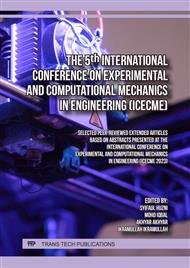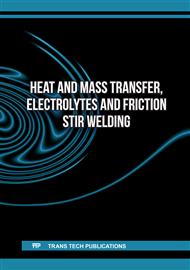p.29
p.35
p.45
p.55
p.63
p.71
p.83
p.101
p.123
Simulation of Adiabatic Flow Patterns and Flow Pattern Map of R134a in Vertical Micro Tubes
Abstract:
The current research paper presents an investigation into the behavior of two-phase flow of liquid-vapour R134a within vertical circular channels with a 1 mm diameter, utilizing the Volume of Fluid (VOF) method. The main objective of these simulations was to create a numerical flow regime map to delineate the boundaries of different flow patterns for liquid-gas R134a. The injection of vapor was performed through an annular (concentric) nozzle configuration. To optimize computational efficiency, a two-dimensional axisymmetric assumption was made. The results of this study led to the identification of four fundamental flow patterns: bubbly flow/confined bubble flow, slug flow, churn flow, and annular flow. The accuracy of these findings was confirmed by comparing them with experimental flow visualization results, demonstrating a strong agreement. This study highlights the effectiveness of Computational Fluid Dynamics in establishing a reliable two-phase flow pattern map.
Info:
Periodical:
Pages:
63-69
Citation:
Online since:
May 2025
Keywords:
Price:
Сopyright:
© 2025 Trans Tech Publications Ltd. All Rights Reserved
Share:
Citation:



